MENU
The Electronic Scholarly Publishing Project: Providing access to classic scientific papers and other scholarly materials, since 1993. More About: ESP | OUR CONTENT | THIS WEBSITE | WHAT'S NEW | WHAT'S HOT
Comparative Timelines
The ESP Timeline (one of the site's most popular features) has been completely updated to allow the user to select (using the timeline controls above each column) different topics for the left and right sides of the display.
Select:
New Left Column
New Left Column
Dates
Decade
New Right Column
New Right Column
1840
 Anna, the Duchess of Bedford (1788-1861), introduces the ritual of afternoon tea in Britain, although tea has been available in England since the late 1600s.
Anna, the Duchess of Bedford (1788-1861), introduces the ritual of afternoon tea in Britain, although tea has been available in England since the late 1600s.
 The polka makes its U.S. debut, introduced by the ballerina Fanny Elssler (1810-1884), who had brought the dance to Paris in 1834.
The polka makes its U.S. debut, introduced by the ballerina Fanny Elssler (1810-1884), who had brought the dance to Paris in 1834.
 The saxophone is invented in Belgium, by the 26-year old instrument maker Antoine Joseph Sax (1814-1894).
The saxophone is invented in Belgium, by the 26-year old instrument maker Antoine Joseph Sax (1814-1894).
 The first postage stamp, called the "Penny Black" and bearing the image of Queen Victoria, is issued in England.
The first postage stamp, called the "Penny Black" and bearing the image of Queen Victoria, is issued in England.
 The oil-immersion microscope is invented by Giovanni Battista Amici (1786-1863), a former professor of mathematics who is now the director of the observatory at the Royal Museum in Florence, and an astronomer to the Grand Duke of Tuscany. The objective lens of this microscope is immersed in a drop of oil which sits on top of the object under study; this helps to minimize aberrations caused by the light source.
The oil-immersion microscope is invented by Giovanni Battista Amici (1786-1863), a former professor of mathematics who is now the director of the observatory at the Royal Museum in Florence, and an astronomer to the Grand Duke of Tuscany. The objective lens of this microscope is immersed in a drop of oil which sits on top of the object under study; this helps to minimize aberrations caused by the light source.
 Charles Darwin's Zoology of the Voyage of the Beagle appears.
Charles Darwin's Zoology of the Voyage of the Beagle appears.
Martin Barry expressed the belief that the spermatozoon enters the egg.
 Alexandre-Edmond Becquerel shows that light can initiate chemical reactions that produce an electric current.
Alexandre-Edmond Becquerel shows that light can initiate chemical reactions that produce an electric current.
 William Henry Talbot patents the Calotype process, the first negative-positive process making possible the first multiple copies.
William Henry Talbot patents the Calotype process, the first negative-positive process making possible the first multiple copies.
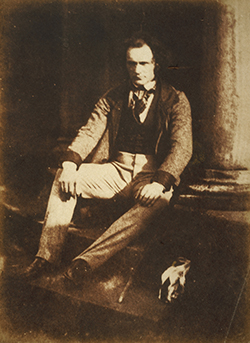 Henry Fox Talbot introduces his patented calotype (or "talbotype") paper negative process, an improved version of his earlier process that greatly reduces the required exposure time.
Henry Fox Talbot introduces his patented calotype (or "talbotype") paper negative process, an improved version of his earlier process that greatly reduces the required exposure time.
1841
The Berlin Zoo opens, when Friedrich Wilhelm IV, the King of Prussia, donates his pheasant gardens and exotic animal colection to the citizens of Berlin.
The New York State Fair is held for the first time, in Syracuse, New York. The Fair is the first in the tradition of U.S. state fairs with agricultural and domestic themes.
 Self-Reliance, by Ralph Waldo Emerson (1803-1882) [essay II in Essays: First Series] is published.
Self-Reliance, by Ralph Waldo Emerson (1803-1882) [essay II in Essays: First Series] is published.
 The first novel in the series called "Leatherstocking Tales", The Deerslayer, by James Fennimore Cooper (1789-1851), is published
The first novel in the series called "Leatherstocking Tales", The Deerslayer, by James Fennimore Cooper (1789-1851), is published
In London, the periodical Punch begins publication.
The U.S.S. Creole, a ship carrying slaves from Virginia to Louisiana, is seized by the slaves on board and taken to Nassau, where they are free.
In Paris, street lights made from arc lamps are demonstrated.
 John Tyler becomes tenth president of the United States.
John Tyler becomes tenth president of the United States.
 The first centralized government bureau of statistics is founded in Belgium by the mathematician Lambert Adolphe Jacques Quetelet (1781-1840).
The first centralized government bureau of statistics is founded in Belgium by the mathematician Lambert Adolphe Jacques Quetelet (1781-1840).
Roderick Murchison names the Permian System.
William Smith's nephew John Phillips formally proposes the geologic eras Paleozoic, Mesozoic and Cainozoic (Cenozoic).
 Charles Thomas Jackson (1805-1880) discovers the anesthetic properties of ether.
Charles Thomas Jackson (1805-1880) discovers the anesthetic properties of ether.
(no entry for this year)
1842
 In May, Edgar Allan Poe's (1809-1849) story "The Masque of the Red Death" appears in Graham's Magazine.
In May, Edgar Allan Poe's (1809-1849) story "The Masque of the Red Death" appears in Graham's Magazine.
 Frederick Douglass leads a successful campaign against Rhode Island's proposed Dorr Constitution, which would have continued the prohibition on black male voting rights.
Frederick Douglass leads a successful campaign against Rhode Island's proposed Dorr Constitution, which would have continued the prohibition on black male voting rights.
In Prigg v. Pennsylvania, the U.S. Supreme Court upholds the Fugitive Slave Law of 1793, stating that slaveowners have a right to retrievetheir "property." In so doing, the court rules that Pennsylvania's anti-kidnapping law is unconstitutional. At the same time, the Supreme Court declares that enforcement of the Fugitive Slave Lawis a federal responsibility in which states are not compelled to participate. Between 1842 and 1850, nine Northern states pass new personal liberty laws which forbid state officials from cooperating in the return of alleged fugitive slaves and bar the use of state facilities for that purpose.
Slavery is abolished in Uruguay.
The Virginia Legislature votes against abolishing slavery.
In Commonwealth v. Hunt, a case involving the Boston Journeyman Bootmakers Society, the Chief Justice of the Massachusetts Supreme Court ruled that trade unions are legal. The ruling revises the common law that treated such unions as criminal conspiracies.
The Massachusetts State Legislature enacts a child labor law that limits the working hours of children under 12 years-old to 10 hours per day.
P. T. Barnum lures crowds of thousands to see his "Feejee Mermaid."
 Charles Darwin's book The Structure and Distribution of Coral Reefs being the first part of the geology of the voyage of the Beagle, is published. During the year Darwin composes an abstract of his theory of species evolution.
Charles Darwin's book The Structure and Distribution of Coral Reefs being the first part of the geology of the voyage of the Beagle, is published. During the year Darwin composes an abstract of his theory of species evolution.
 Carl Wilhelm von Nägeli (1817-1891) publishes Zur Entwicklungsgeschichte des Pollens. His paper describes cell division in plants with remarkable accuracy, and discusses seed formation in flowering plants.
Carl Wilhelm von Nägeli (1817-1891) publishes Zur Entwicklungsgeschichte des Pollens. His paper describes cell division in plants with remarkable accuracy, and discusses seed formation in flowering plants.
Richard Owen names Cetiosaurus, the sixth named dinosaur species.
 Die Thierchemie, by chemist Baron Justus von Liebig (1803-1873), is published, and the science of biochemistry begins.
Die Thierchemie, by chemist Baron Justus von Liebig (1803-1873), is published, and the science of biochemistry begins.
 The term DINOSAUR is coined by Richard Owen (1804-1892) to describe a class of animals that we now believe were dominant on the Earth for approximately 175 million years.
The term DINOSAUR is coined by Richard Owen (1804-1892) to describe a class of animals that we now believe were dominant on the Earth for approximately 175 million years.
Based on Agassiz's Ice Age theory, self-taught science enthusiast Charles MacLaren publishes a newspaper article explaining that substantial ice sheets in the northern hemisphere would have lowered global sea level.
 German physician and physicist Julius Robert Mayer is the first to state the law of conservation of energy, noting specifically that heat and mechanical energy are two aspects of the same thing.
German physician and physicist Julius Robert Mayer is the first to state the law of conservation of energy, noting specifically that heat and mechanical energy are two aspects of the same thing.
 On the uniform motion of heat in homogeneous solid bodies, by William Thomson, aka Lord Kelvin (1824-1907), is published. Thomson's concern with the physics of cooling bodies will draw him into debates concerning the age of the Earth. In 1846 he calculates that the Earth can be no more than 100 million years old.
On the uniform motion of heat in homogeneous solid bodies, by William Thomson, aka Lord Kelvin (1824-1907), is published. Thomson's concern with the physics of cooling bodies will draw him into debates concerning the age of the Earth. In 1846 he calculates that the Earth can be no more than 100 million years old.
 The change in the observed frequency of waves emitted from a source, moving relative to the observer, is described by Christian Johann Doppler (1803-1853). This phenomenon is now known as the Doppler Effect.
The change in the observed frequency of waves emitted from a source, moving relative to the observer, is described by Christian Johann Doppler (1803-1853). This phenomenon is now known as the Doppler Effect.
(no entry for this year)
1843
In London, The Economist and Sunday News of the World begin publication.
 In Dresden, Richard Wagner's opera Der fliegende Holländer is premiered.
In Dresden, Richard Wagner's opera Der fliegende Holländer is premiered.
 Jerome Increase Case, a 24 year-old farmer from Oswego County, New York, introduces the J. I. Case Threshing Machine. The J. I. Case Company will manufacture farm equipment and will become the largest thresher producer in the world.
Jerome Increase Case, a 24 year-old farmer from Oswego County, New York, introduces the J. I. Case Threshing Machine. The J. I. Case Company will manufacture farm equipment and will become the largest thresher producer in the world.
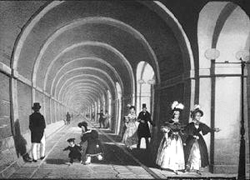 The first tunnel under the Thames opens on March 25, built by Isambard Kingdom Brunel (1806-1859). {a]The Thames Tunnel{/a} connects Rotherhithe and Wapping, London. Although it was a triumph of civil engineering, the Thames Tunnel was not a financial success. It had cost a fortune to build — £454,000 to dig and another £180,000 to fit out — far exceeding its initial cost estimates. Proposals to extend the entrance to accommodate wheeled vehicles failed owing to cost, and it was only used by pedestrians. It became a major tourist attraction, attracting about two million people a year, each paying a penny to pass through.
The first tunnel under the Thames opens on March 25, built by Isambard Kingdom Brunel (1806-1859). {a]The Thames Tunnel{/a} connects Rotherhithe and Wapping, London. Although it was a triumph of civil engineering, the Thames Tunnel was not a financial success. It had cost a fortune to build — £454,000 to dig and another £180,000 to fit out — far exceeding its initial cost estimates. Proposals to extend the entrance to accommodate wheeled vehicles failed owing to cost, and it was only used by pedestrians. It became a major tourist attraction, attracting about two million people a year, each paying a penny to pass through.
 Congress grants S. F. B. Morse $30,000 to build the first telegraph line (Washington to Baltimore).
Congress grants S. F. B. Morse $30,000 to build the first telegraph line (Washington to Baltimore).
Louis Agassiz completes Les Poissons Fossiles describing fossil fish of the world. This single monograph increases tenfold the formally described vertebrates known to science.
 That the nervous system uses electricity in communicating between different parts of the body is demonstrated by Emil Heinrich du Bois-Reymond (1818-1896). He founds the field of electrophysiology.
That the nervous system uses electricity in communicating between different parts of the body is demonstrated by Emil Heinrich du Bois-Reymond (1818-1896). He founds the field of electrophysiology.
 John Stuart Mill publishes Logic.
John Stuart Mill publishes Logic.
 James Prescott Joule determines the mechanical equivalent of heat by measuring the rise in temperature produced in water by stirring it.
James Prescott Joule determines the mechanical equivalent of heat by measuring the rise in temperature produced in water by stirring it.
(no entry for this year)
1844
In England, the Young Men's Christian Association (YMCA) is founded by George Williams (1821-1905).
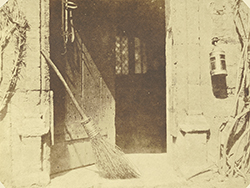 The Open Door is an early calotype, included in The Pencil of Nature, the first commercially published book to be illustrated with photographs.
The Open Door is an early calotype, included in The Pencil of Nature, the first commercially published book to be illustrated with photographs.
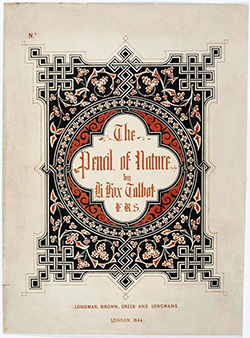 The Pencil of Nature, published in six installments between 1844 and 1846, was the "first photographically illustrated book to be commercially published" or "the first commercially published book illustrated with photographs". It was wholly executed by the new art of Photogenic Drawing, without any aid whatever from the artist's pencil and regarded as an important and influential work in the history of photography. Written by William Henry Fox Talbot and published by Longman, Brown, Green & Longmans in London, the book detailed Talbot's development of the calotype process and included 24 calotype prints, each one pasted in by hand, illustrating some of the possible applications of the new technology. Since photography was still very much a novelty and many people remained unfamiliar with the concept, Talbot felt compelled to insert the following notice into his book: The plates of the present work are impressed by the agency of Light alone, without any aid whatever from the artist's pencil. They are the sun-pictures themselves, and not, as some persons have imagined, engravings in imitation.
The Pencil of Nature, published in six installments between 1844 and 1846, was the "first photographically illustrated book to be commercially published" or "the first commercially published book illustrated with photographs". It was wholly executed by the new art of Photogenic Drawing, without any aid whatever from the artist's pencil and regarded as an important and influential work in the history of photography. Written by William Henry Fox Talbot and published by Longman, Brown, Green & Longmans in London, the book detailed Talbot's development of the calotype process and included 24 calotype prints, each one pasted in by hand, illustrating some of the possible applications of the new technology. Since photography was still very much a novelty and many people remained unfamiliar with the concept, Talbot felt compelled to insert the following notice into his book: The plates of the present work are impressed by the agency of Light alone, without any aid whatever from the artist's pencil. They are the sun-pictures themselves, and not, as some persons have imagined, engravings in imitation.
 In Hartford, Connecticut, dentist Horace Wells (1815-1848) uses nitrous oxide as an anesthetic; he is the first to do so.
In Hartford, Connecticut, dentist Horace Wells (1815-1848) uses nitrous oxide as an anesthetic; he is the first to do so.
 Charles Darwin first outlines his thoughts on natural selection in an unpublished essay.
Charles Darwin first outlines his thoughts on natural selection in an unpublished essay.
 Robert Chambers, a Scottish journalist, publishes (anonymously) his Vestiges of the Natural History of Creation, an early book outlining an evolutionary view of the natural world.
Robert Chambers, a Scottish journalist, publishes (anonymously) his Vestiges of the Natural History of Creation, an early book outlining an evolutionary view of the natural world.
 The second part of the Geology of the Beagle, Charles Darwin's Geological Observations on Volcanic Islands Visited During the Voyage of H.M.S. Beagle, is published. Darwin's book claims to supply evidence for the geological theories of Charles Lyell (1797-1875), from areas that Lyell himself had never seen.
The second part of the Geology of the Beagle, Charles Darwin's Geological Observations on Volcanic Islands Visited During the Voyage of H.M.S. Beagle, is published. Darwin's book claims to supply evidence for the geological theories of Charles Lyell (1797-1875), from areas that Lyell himself had never seen.
 That all the cells in an organism are generated from successive divisions of the egg cell is described by Rudolf Albert von Kölliker (1817-1905). Kölliker shows that the egg is itself a cell.
That all the cells in an organism are generated from successive divisions of the egg cell is described by Rudolf Albert von Kölliker (1817-1905). Kölliker shows that the egg is itself a cell.
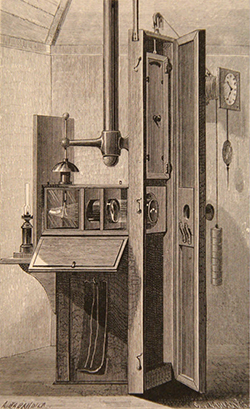 Francis Ronalds invents the first successful camera for continuous recording (the first "movie camera") of the variations in meteorological and geomagnetic parameters over time. A copy of Ronalds' paper describing describing his device maybe obtained HERE.
Francis Ronalds invents the first successful camera for continuous recording (the first "movie camera") of the variations in meteorological and geomagnetic parameters over time. A copy of Ronalds' paper describing describing his device maybe obtained HERE.
1845
Scientific American is founded by Alfred Beach (1826-1896). The first issue is published on August 28. The publication, in newspaper format, presents science for the general reader.
 Edgar Allan Poe's "The Raven" appears in the New York Evening Mirror. Poe's collection The Raven and Other Poems is published.
Edgar Allan Poe's "The Raven" appears in the New York Evening Mirror. Poe's collection The Raven and Other Poems is published.
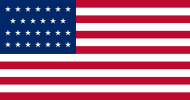 The US flag is modified to have twenty-seven stars, reflecting the addition of one new state: Florida.
The US flag is modified to have twenty-seven stars, reflecting the addition of one new state: Florida.
 Frederick Douglass publishes his autobiography, The Life and Times of Frederick Douglass.
Frederick Douglass publishes his autobiography, The Life and Times of Frederick Douglass.
 The bridge spanning the Allegheny River, at Pittsburgh, designed by engineer John Augustus Roebling (1806-1869), opens in May. It is the first wire cable suspension aqueduct bridge in the world.
The bridge spanning the Allegheny River, at Pittsburgh, designed by engineer John Augustus Roebling (1806-1869), opens in May. It is the first wire cable suspension aqueduct bridge in the world.
 James K. Polk becomes eleventh president of the United States.
James K. Polk becomes eleventh president of the United States.
Texas is annexed by the United States.
The Irish potato famine begins, one of the century's worst natural disasters. One million citizens starve to death, and one million others emigrate, mostly to the United States
The School of Medicine in Paris creates a gallery of comparative anatomy.
 Michael Faraday relates magnetism to light after finding the magnetic field effects the polarization of light in crystals. He proposes that light may be waves of electromagnetism. He also describes the phenomena of diamagnetism and paramagnetism, which he explains in terms of his concept of a magnetic field.
Michael Faraday relates magnetism to light after finding the magnetic field effects the polarization of light in crystals. He proposes that light may be waves of electromagnetism. He also describes the phenomena of diamagnetism and paramagnetism, which he explains in terms of his concept of a magnetic field.
(no entry for this year)
1846
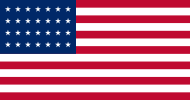 The US flag is modified to have twenty-eight stars, reflecting the addition of one new state: Texas.
The US flag is modified to have twenty-eight stars, reflecting the addition of one new state: Texas.
Mexican-American War Defeated, Mexico yields an enormous amount of territory to the United States. Americans then wrestle with a controversial topic: Is slavery permitted in the new lands?
 Nitroglycerine is discovered by chemist Ascanio Sobrero (1811-1870), although he uses to term "pyroglycerine". Because of the risks involved in its production, it will not be manufactured commercially for more than a decade.
Nitroglycerine is discovered by chemist Ascanio Sobrero (1811-1870), although he uses to term "pyroglycerine". Because of the risks involved in its production, it will not be manufactured commercially for more than a decade.
 The lock-stitch sewing machine is patented by Elias Howe (1819-1867).
The lock-stitch sewing machine is patented by Elias Howe (1819-1867).
The first professional baseball game is played, in Hoboken, New Jersey.
The Mexican War (1846-48) between the United States and Mexico results in the United States taking possession of California and much of the Southwest, which had been Mexican territory.
The Oregon Treaty delineates border between the United States and Canada.
 Karl Wilhelm Von Nägeli shows that plant cells are not formed as buds from the surfaces of existing cells, as was proposed by Theodore Schwann.
Karl Wilhelm Von Nägeli shows that plant cells are not formed as buds from the surfaces of existing cells, as was proposed by Theodore Schwann.
Joseph Leidy identifies in pork the parasite that causes trichinosis, a potentially fatal human disease.
 James Prescott Joule discovers that the length of an iron bar changes slightly when the bar is magnetized.
James Prescott Joule discovers that the length of an iron bar changes slightly when the bar is magnetized.
(no entry for this year)
1847
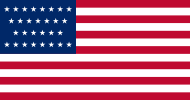 The US flag is modified to have twenty-nine stars, reflecting the addition of one new state: Iowa.
The US flag is modified to have twenty-nine stars, reflecting the addition of one new state: Iowa.
 The North Star, an abolitionist newspaper, begins publication in Rochester, New York. The paper is founded by escaped slave Frederick Douglass (1817-1895), with money he earned as a result of his autobiography.
The North Star, an abolitionist newspaper, begins publication in Rochester, New York. The paper is founded by escaped slave Frederick Douglass (1817-1895), with money he earned as a result of his autobiography.
Liberia is formed as a home for released American slaves.
Missouri bans the education of free blacks.
The Istanbul slave market is abolished.
 The rotary, or "lightning" printing press is patented by Richard March Hoe (1812-1886). It is used first by the Philadelphia Public Ledger.
The rotary, or "lightning" printing press is patented by Richard March Hoe (1812-1886). It is used first by the Philadelphia Public Ledger.
The Factory Act is passed in Britain. It forbids women and children between the ages of 13 and 18 to work more than 10 hours per day.
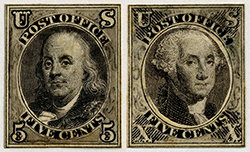 The first United States postage stamps are issued
The first United States postage stamps are issued
Jakob Mathias Schleiden and Theodor Schwann announce that cells are the basic units of all living structures.
 In his Account of a New Anesthetic Agent, obstetrician Sir James Simpson (1811-1870) argues that chloroform, a substance he discovered, is a better anesthetic than nitrous oxide or ether. Simpson has begun to use chloroform as an anesthetic in childbirth.
In his Account of a New Anesthetic Agent, obstetrician Sir James Simpson (1811-1870) argues that chloroform, a substance he discovered, is a better anesthetic than nitrous oxide or ether. Simpson has begun to use chloroform as an anesthetic in childbirth.
 Über die Erhaltung der Kraft ("On the Conservation of Force"), by Hermann Ludwig von Helmholtz (1821-1894), is published. It articulates what later becomes known as the Conservation of Energy.
Über die Erhaltung der Kraft ("On the Conservation of Force"), by Hermann Ludwig von Helmholtz (1821-1894), is published. It articulates what later becomes known as the Conservation of Energy.
 Edmond Becquerel makes the first full-color photographs, but they are only laboratory curiosities: an exposure lasting hours or days is required and the colors are so light-sensitive that they sometimes fade right before the viewer's eyes while being examined.
Edmond Becquerel makes the first full-color photographs, but they are only laboratory curiosities: an exposure lasting hours or days is required and the colors are so light-sensitive that they sometimes fade right before the viewer's eyes while being examined.
1848
 Painting by Jean Auguste Dominique Ingres: Venus Anadyomene, now held at the Musée Condé, Chantilly, France. It is a female nude of the Venus Anadyomene type, showing the goddess Venus rising from the sea. Ingres began the painting in 1808 during his stay in Rome at the French Academy. The first preparatory drawings showed Venus in the Venus Pudica position, standing and covering her breasts with her hands. The pose was inspired by Botticelli's The Birth of Venus — Ingres visited Florence and the Uffizi in 1805 and could have seen the painting there. A drawing of 1806 then shows the goddess with her arms in the air and her hair in her hands, a pose the artist also used in his 1856 The Source. The painting remained in the planning stages until 1848, when he completed it as a commission from the banker and botanist Benjamin Delessert.
Painting by Jean Auguste Dominique Ingres: Venus Anadyomene, now held at the Musée Condé, Chantilly, France. It is a female nude of the Venus Anadyomene type, showing the goddess Venus rising from the sea. Ingres began the painting in 1808 during his stay in Rome at the French Academy. The first preparatory drawings showed Venus in the Venus Pudica position, standing and covering her breasts with her hands. The pose was inspired by Botticelli's The Birth of Venus — Ingres visited Florence and the Uffizi in 1805 and could have seen the painting there. A drawing of 1806 then shows the goddess with her arms in the air and her hair in her hands, a pose the artist also used in his 1856 The Source. The painting remained in the planning stages until 1848, when he completed it as a commission from the banker and botanist Benjamin Delessert.
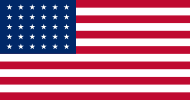 The US flag is modified to have thirty stars, reflecting the addition of one new state: Wisconsin.
The US flag is modified to have thirty stars, reflecting the addition of one new state: Wisconsin.
Slavery is abolished in old French and Danish colonies.
 Karl Marx publishes The Communist Manifesto, which asserts that revolution by the working classes will ultimately destroy capitalism.
Karl Marx publishes The Communist Manifesto, which asserts that revolution by the working classes will ultimately destroy capitalism.
Revolution breaks out across much of Europe; the Second Republic is proclaimed in France.
 On the archetype and homologies of the vertebrate skeleton, by Richard Owen (1804-1892), is published. In the book Owen argues that the skull, and other parts of the body, are formed by the modification of the vertebra of different animals.
On the archetype and homologies of the vertebrate skeleton, by Richard Owen (1804-1892), is published. In the book Owen argues that the skull, and other parts of the body, are formed by the modification of the vertebra of different animals.
Richard Owen describes "homologies" — similarities of design in bird wings, fish fins and human hands.
A Neanderthal skull is excavated from Forbes Quarry on the northern side of the Rock of Gibraltar. Over the next few decades, the skull will be stashed in a library cabinet in Gibraltar, dusted off and sent to London, accurately likened to the ancient skullcap from Neander Valley in Germany, nearly named Homo calpicus, and finally stored and largely forgotten in the Royal College of Surgeons.
The American Medical Association is founded in Philadelphia, with a mission "to promote the science and art of medicine and the betterment of public health."
 An absolute scale of temperatures is proposed by William Thomson (1824-1907). Thomson will become Baron Kelvin of Largs, in 1892, and the scale will come to bear his name.
An absolute scale of temperatures is proposed by William Thomson (1824-1907). Thomson will become Baron Kelvin of Largs, in 1892, and the scale will come to bear his name.
 Armand Hippolyte Louis Fizeau suggests that light from a source of moving away from the observer will be shifted toward the red end of the spectrum, a phenomenon known as redshift. This is closely related to, but not exactly the same as, the Doppler effect.
Armand Hippolyte Louis Fizeau suggests that light from a source of moving away from the observer will be shifted toward the red end of the spectrum, a phenomenon known as redshift. This is closely related to, but not exactly the same as, the Doppler effect.
 The American Association for the Advancement of Science is founded. Joseph Henry (1797-1898), who had been appointed the first secretary of the Smithsonian in 1846, is the first secretary of the AAAS, which is modeled after The British Association for the Advancement of Science. The British Association has been in existence for 17 years.
The American Association for the Advancement of Science is founded. Joseph Henry (1797-1898), who had been appointed the first secretary of the Smithsonian in 1846, is the first secretary of the AAAS, which is modeled after The British Association for the Advancement of Science. The British Association has been in existence for 17 years.
The American Association for the Advancement of Science is established.
(no entry for this year)
1849
 Henry David Thoreau's A week on the Concord and Merrimack Rivers and "Resistance to Civil Government" (often referred to as "Civil Disobedience") are published.
Henry David Thoreau's A week on the Concord and Merrimack Rivers and "Resistance to Civil Government" (often referred to as "Civil Disobedience") are published.
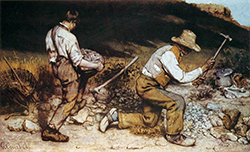 Painting by Gustave Courbet: The Stone Breakers (French: Les Casseurs de pierres) is a work of social realism, depicting two peasants, a young man and an old man, breaking rocks. The painting was first exhibited at the Paris Salon of 1850. It was destroyed during World War II, along with 154 other pictures, when a transport vehicle moving the pictures to the castle of Königstein, near Dresden, was bombed by Allied forces in February 1945.
Painting by Gustave Courbet: The Stone Breakers (French: Les Casseurs de pierres) is a work of social realism, depicting two peasants, a young man and an old man, breaking rocks. The painting was first exhibited at the Paris Salon of 1850. It was destroyed during World War II, along with 154 other pictures, when a transport vehicle moving the pictures to the castle of Königstein, near Dresden, was bombed by Allied forces in February 1945.
 Charles Lewis Reason becomes the first African-American college instructor when he is hired at predominantly white Free Mission College (later New York Central College) to teach Greek, Latin, French, and mathematics.
Charles Lewis Reason becomes the first African-American college instructor when he is hired at predominantly white Free Mission College (later New York Central College) to teach Greek, Latin, French, and mathematics.
 Harriet Tubman escapes from slavery and goes on to lead more than 300 slaves to freedom on the underground railroad.
Harriet Tubman escapes from slavery and goes on to lead more than 300 slaves to freedom on the underground railroad.
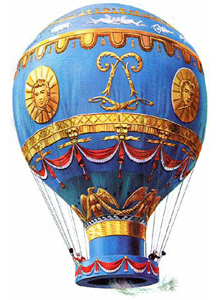 A unmanned Montgolfier balloon is used to drop bombs on Venice. This is the first time a bombing has been conducted from the air.
A unmanned Montgolfier balloon is used to drop bombs on Venice. This is the first time a bombing has been conducted from the air.
 Zachary Taylor becomes twelfth president of the United States.
Zachary Taylor becomes twelfth president of the United States.
The California gold rush begins as more than 100,000 people swarm to California to make their fortunes after gold is found there in 1848.
Showmen Moses Kimball and P. T. Barnum purchase the contents of the Peale Museum (established in 1784).
 Botanist Carl Friedrich von Gärtner (1772-1850) publishes Versuche und Beobachtungen über die Bastarderzeugung im Pflanzenreiche. The book describes thousands of experiments, many involving the production of hybrids, on more than 500 species of plants. Mendel will study this book in detail when he attends the University of Vienna in the early 1850s, and will cite the book in the opening of his paper of 1865.
Botanist Carl Friedrich von Gärtner (1772-1850) publishes Versuche und Beobachtungen über die Bastarderzeugung im Pflanzenreiche. The book describes thousands of experiments, many involving the production of hybrids, on more than 500 species of plants. Mendel will study this book in detail when he attends the University of Vienna in the early 1850s, and will cite the book in the opening of his paper of 1865.
Based on a humerus 58 inches in circumference, Mantell names a new dinosaur species: Pelorosaurus, the first recognized sauropod.
 Armand Hippolyte Louis Fizeau measures the velocity of light in error by measuring the time it takes for a beam of light to pass between the teeth of a rotating gear. The light is reflected by a mirror and stopped by the next tooth of the gear. The result, 315,000 km/se4c (196,000 miles/sec), is within 5% of today's accepted value.
Armand Hippolyte Louis Fizeau measures the velocity of light in error by measuring the time it takes for a beam of light to pass between the teeth of a rotating gear. The light is reflected by a mirror and stopped by the next tooth of the gear. The result, 315,000 km/se4c (196,000 miles/sec), is within 5% of today's accepted value.
 In describing Sadi Carnot's theory of heat, published in 1824, William Thomson (1824-1907) uses the term THERMODYNAMICS.
In describing Sadi Carnot's theory of heat, published in 1824, William Thomson (1824-1907) uses the term THERMODYNAMICS.
 The speed of light is measured by physicist Armand Hippolyte Louis Fizeau (1819-1896) to be approximately 186,000 miles per second.
The speed of light is measured by physicist Armand Hippolyte Louis Fizeau (1819-1896) to be approximately 186,000 miles per second.
ESP Quick Facts
ESP Origins
In the early 1990's, Robert Robbins was a faculty member at Johns Hopkins, where he directed the informatics core of GDB — the human gene-mapping database of the international human genome project. To share papers with colleagues around the world, he set up a small paper-sharing section on his personal web page. This small project evolved into The Electronic Scholarly Publishing Project.
ESP Support
In 1995, Robbins became the VP/IT of the Fred Hutchinson Cancer Research Center in Seattle, WA. Soon after arriving in Seattle, Robbins secured funding, through the ELSI component of the US Human Genome Project, to create the original ESP.ORG web site, with the formal goal of providing free, world-wide access to the literature of classical genetics.
ESP Rationale
Although the methods of molecular biology can seem almost magical to the uninitiated, the original techniques of classical genetics are readily appreciated by one and all: cross individuals that differ in some inherited trait, collect all of the progeny, score their attributes, and propose mechanisms to explain the patterns of inheritance observed.
ESP Goal
In reading the early works of classical genetics, one is drawn, almost inexorably, into ever more complex models, until molecular explanations begin to seem both necessary and natural. At that point, the tools for understanding genome research are at hand. Assisting readers reach this point was the original goal of The Electronic Scholarly Publishing Project.
ESP Usage
Usage of the site grew rapidly and has remained high. Faculty began to use the site for their assigned readings. Other on-line publishers, ranging from The New York Times to Nature referenced ESP materials in their own publications. Nobel laureates (e.g., Joshua Lederberg) regularly used the site and even wrote to suggest changes and improvements.
ESP Content
When the site began, no journals were making their early content available in digital format. As a result, ESP was obliged to digitize classic literature before it could be made available. For many important papers — such as Mendel's original paper or the first genetic map — ESP had to produce entirely new typeset versions of the works, if they were to be available in a high-quality format.
ESP Help
Early support from the DOE component of the Human Genome Project was critically important for getting the ESP project on a firm foundation. Since that funding ended (nearly 20 years ago), the project has been operated as a purely volunteer effort. Anyone wishing to assist in these efforts should send an email to Robbins.
ESP Plans
With the development of methods for adding typeset side notes to PDF files, the ESP project now plans to add annotated versions of some classical papers to its holdings. We also plan to add new reference and pedagogical material. We have already started providing regularly updated, comprehensive bibliographies to the ESP.ORG site.
ESP Picks from Around the Web (updated 06 MAR 2017 )
Old Science

Weird Science

Treating Disease with Fecal Transplantation
Fossils of miniature humans (hobbits) discovered in Indonesia

Dinosaur tail, complete with feathers, found preserved in amber.
Astronomy

Mysterious fast radio burst (FRB) detected in the distant universe.